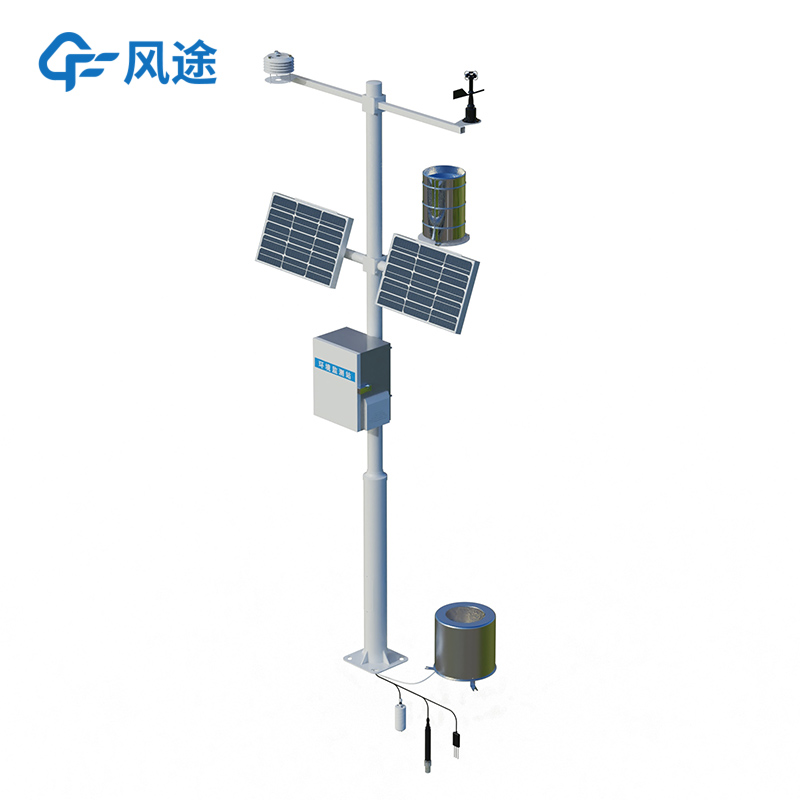Tianqiong Sensor IOT Technology Co., Ltd
Sales Manager:Ms. Emily Wang
Cel,Whatsapp,Wechat:+86 15898932201
Email:info@fengtutec.com
Add:No. 155 Optoelectronic Industry Accelerator, Gaoxin District, Weifang, Shandong, China

Sales Manager:Ms. Emily Wang
Cel,Whatsapp,Wechat:+86 15898932201
Email:info@fengtutec.com
Add:No. 155 Optoelectronic Industry Accelerator, Gaoxin District, Weifang, Shandong, China
time:2025-07-17 08:55:30 source:Weather Station viewed:224 time
Meteorological disasters often cause severe losses to agriculture. Among the numerous agrometeorological disasters, drought, flood, frost, and dry-hot wind are relatively common.
Drought is a disaster caused by long-term lack of rain or little rain, which leads to soil water shortage and dry air, resulting in crop water shortage, thus affecting normal growth and development and reducing yields. Crops will wilt due to water shortage, and their growth will be greatly hindered. Floods are caused by excessively long and concentrated precipitation, with a large amount of waterlogging submerging farmland, resulting in oxygen deficiency in crop roots, affecting growth, and even causing the whole plant to die in severe cases. Frost mostly occurs in warm periods. Short-term low-temperature freezing damage will cause water in crop cell gaps to form ice crystals, leading to cell dehydration. The increase of ice crystals will also damage crop cells, causing irreversible damage to crops. Dry-hot wind is a comprehensive weather phenomenon composed of dry wind with high temperature, low humidity and strong wind, which can cause a large amount of transpiration of crops and bring huge losses to agriculture in a short time.
In the face of these meteorological disasters, traditional agriculture is often difficult to cope with effectively. However, with the development of science and technology, Agricultural Weather Stations have provided new ideas for agricultural disaster prevention and mitigation.
Agricultural Weather Stations are intelligent monitoring platforms that integrate meteorological, soil and crop growth data. It can collect farmland environment information in real-time through a multi-parameter sensor network. In terms of meteorological element monitoring, it can accurately monitor key meteorological parameters such as air temperature, humidity, wind speed, wind direction, precipitation and light intensity.
Using Agricultural Weather Stations, through the analysis of temperature and humidity change trends, the system can predict the risk of frost, drought or heavy rain in advance. When it is monitored that the humidity continues to drop and the soil water content decreases to a certain extent, the drought risk can be warned. After receiving the warning, farmers can carry out irrigation in time to keep moisture, ensuring the water needed for crop growth.
Agricultural Weather Stations can be linked with early warning information from meteorological departments. Once it is monitored that the relevant meteorological data reach the disaster warning threshold, an alarm will be issued quickly. For example, when the rain gauge detects that the rainfall is about to exceed the set threshold, the system will immediately send early warning information to farmers, who can take preventive measures such as dredging the drainage system in advance to reduce the damage to crops caused by farmland waterlogging. Under drought warning, the system can also automatically adjust the irrigation strategy, reasonably allocate water resources according to the water demand law of crops in different growth stages, and give priority to ensuring the water demand in key growth periods.
Therefore, in the current situation of frequent meteorological disasters, vigorously promoting and applying Agricultural Weather Stations can help farmers reduce natural risks.

Negative oxygen ions exert physiological effects on the human nervous system and blood circulation. Their concentration directly reflects air quality and serves as a key indicator for air quality assessment. The Negative Oxygen Ion Monitoring Station is specially designed to monitor this core indica...
An ultrasonic weather station is a modern meteorological monitoring device designed based on the principles of ultrasonics. It measures atmospheric parameters to provide real-time and accurate weather data for environmental monitoring, agriculture, urban management, and other fields. Compared to tra...
In traditional cognition, agricultural production has often "relied on the weather", and weather changes have a huge impact on crop growth. Especially during the Sanfu days (the peak summer heat period), extreme weather such as high temperatures, high humidity, and heavy rainfall occurs fr...
In the photovoltaic industry, the problem of black edges on photovoltaic modules is quite common. The black edges are mainly caused by poor sealing of the frame during the module encapsulation process, which allows water vapor and oxygen to penetrate, causing oxidation or corrosion at the edges of t...